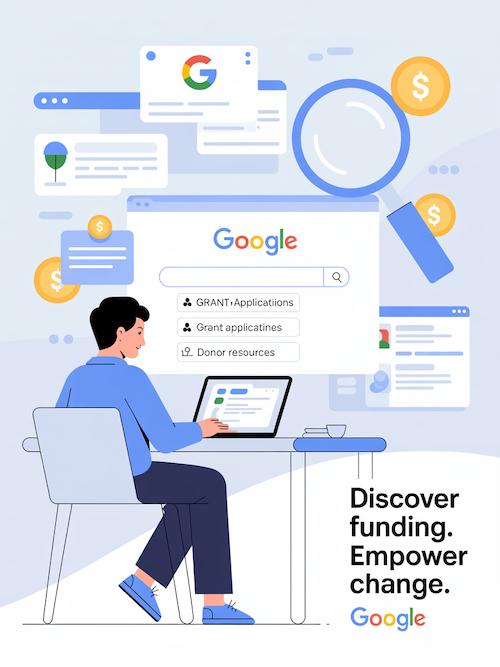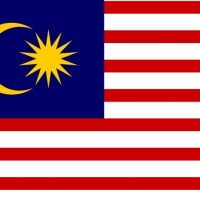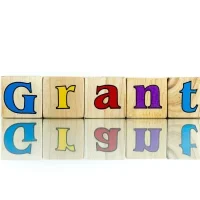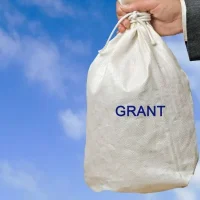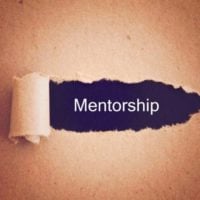In today’s competitive funding landscape, NGOs and nonprofits can no longer rely solely on one-time grants or individual donations. Strategic funding partnerships offer more than just financial support — they bring long-term collaboration, shared goals, and mutual growth. These partnerships often lead to greater credibility, expanded networks, co-designed projects, and access to new geographic or thematic areas.
By aligning with funders who share your mission, you position your organization to achieve sustained impact, tap into new resources, and build resilience. Strategic partnerships are not just about money — they’re about mission alignment, influence, and joint value creation in a rapidly changing development environment
This guide is designed for changemakers across the nonprofit and development sector who are looking to build stronger, smarter, and more sustainable funding relationships. Whether you are a program manager at a grassroots NGO, a founder of a new nonprofit, a fundraising officer at a large organization, or an independent development consultant, this guide will help you navigate the digital landscape to find the right funding partners online.
1. Using Advanced Google Search for Partnership Leads
Advanced Google search techniques can help NGOs uncover funding opportunities that typical searches may miss. Using operators like site: (to target donor websites), intitle: (to find pages with relevant titles), or filetype:pdf (to locate downloadable proposal guidelines or donor strategies), NGOs can refine results and save time. Combining keywords such as “partnership opportunity + NGO” or “call for proposals + Africa” helps find funding leads and announcements that are buried deep online. These methods empower NGOs to search more strategically and gain a competitive edge in discovering potential partners.
2. Exploring NGO-Specific Funding Directories
NGO-specific directories are curated platforms that list grant opportunities, donor contacts, and proposal resources tailored to the nonprofit sector. Examples include fundsforNGOs, GrantStation, and Devex, which allow users to filter opportunities by region, sector, or deadline. Many directories offer premium features such as access to thousands of grant listings, proposal templates, and training resources. These platforms save time by centralizing critical information and can help both small and large NGOs identify suitable funding sources. Regular use of these directories ensures that organizations stay updated with current and relevant opportunities.
3. Leveraging Charity and Foundation Databases
Charity and foundation databases provide in-depth information about philanthropic funders, including giving history, focus areas, and contact details. Platforms like Foundation Directory Online, Candid, and Philanthropy News Digest allow NGOs to identify potential donors whose missions align with theirs. These databases often include tools to analyze trends and donor behavior, enabling organizations to tailor outreach more effectively. By reviewing funders’ past grants and geographic focus, NGOs can prioritize high-potential leads and improve proposal targeting—saving time and increasing the chance of success in partnership building.
4. Monitoring Grant Portals and Online Funding Boards
Development agencies and institutional donors often publish active funding opportunities on their official websites or partner portals. Portals such as Grants.gov, UNGM, and the EU Funding & Tenders Portal provide comprehensive listings with deadlines, eligibility criteria, and application instructions. These platforms are updated regularly, and NGOs that monitor them closely can be among the first to respond to time-sensitive opportunities. Using these portals ensures access to authentic, credible sources of funding and helps NGOs plan strategically for upcoming calls for proposals or partnership frameworks.
5. Using LinkedIn to Identify and Connect with Donor Representatives
LinkedIn is a professional networking platform that allows NGOs to find and connect with donor representatives, such as grant officers, program managers, or CSR leads. By using filters like job title, organization name, or sector, NGOs can identify key decision-makers. Engaging with their posts or sending personalized connection requests builds relationships over time.
LinkedIn is also valuable for monitoring updates from donor agencies, showcasing organizational achievements, and participating in development-related conversations—making it an effective space for visibility and partnership cultivation.
6. Following Donor Agencies and Foundations on Twitter/X
Twitter (now X) is widely used by donor agencies, foundations, and CSR programs to share real-time updates, including grant announcements, project success stories, and partnership news. NGOs can follow these accounts to stay informed and respond quickly to new opportunities. Hashtags like #grantopportunity, #donorfunding, or #CFP can also help discover trending calls for proposals. Liking, retweeting, or engaging in conversations enhances visibility and can lead to meaningful interactions with donor representatives, especially in advocacy-focused or time-sensitive sectors.
7. Exploring Facebook Groups for NGO Collaboration Calls
Facebook hosts numerous active groups focused on NGO partnerships, grant alerts, and collaboration opportunities. NGOs can join region- or theme-specific groups such as “NGO Grants & Funding” or “Development Partnerships in Africa” to find calls for collaboration, requests for joint proposals, and donor updates. These groups often include members from across the globe, allowing smaller NGOs to access larger networks and promote their work. Regular engagement—through posts, responses, and knowledge sharing—can lead to connections, referrals, and grassroots-level funding leads.
8. Using YouTube Channels for Donor Announcements and Webinars
Many donors use YouTube to broadcast funding briefings, project impact videos, and informational webinars. NGOs can subscribe to these channels to access donor strategies, application walkthroughs, and recorded Q&A sessions. This content often includes insights not available in written documents and can help organizations tailor proposals more effectively.
Watching these videos also helps NGOs understand how to communicate impact and align with donor language. YouTube thus becomes a valuable research tool for proposal preparation and donor engagement.
9. Using Donor Mapping Platforms and Partnership Dashboards
Donor mapping tools visually display who is funding what, where, and with whom. These platforms, often maintained by UN agencies, INGOs, or sector networks, allow NGOs to identify active donors in specific regions or sectors. Dashboards may include project timelines, funding amounts, and implementing partner information. By analyzing these patterns, NGOs can uncover gaps, avoid duplicating efforts, and identify potential collaborators or co-funding opportunities. Using these tools ensures smarter targeting and a more strategic approach to partnership development.
10. Searching Open Data Portals of Development Agencies
Open data portals offer detailed insights into donor-funded activities, financial flows, and project outcomes. Development agencies like the World Bank, OECD, and UNDP publish project data to promote transparency. NGOs can use these portals to identify which donors are active in their area, what types of projects are being funded, and who the implementing partners are. This information is invaluable for aligning proposals, understanding donor behavior, and identifying partnership trends based on actual funding records.
11. Setting Google Alerts for New Donor Opportunities
Google Alerts is a free tool that notifies users via email whenever selected keywords appear in new online content. NGOs can create alerts using terms like “NGO grant,” “call for proposals + health,” or “partnership opportunity + Africa” to receive timely updates. These alerts help organizations discover new opportunities without daily manual searching. They’re especially useful for tracking smaller or niche funders, new initiatives, or fast-moving trends in the funding space. Alerts can be customized by frequency, region, and language.
12. Using ChatGPT or AI Tools to Find Partnership Leads
AI tools like ChatGPT can support NGOs in donor research, proposal writing, and partnership outreach. They can help generate lists of relevant donors, summarize guidelines, brainstorm outreach messages, or simulate Q&A scenarios. NGOs can input criteria like region, focus area, or donor type and receive tailored suggestions. These tools also assist in drafting personalized emails and aligning language with donor expectations. By automating repetitive tasks, AI enhances research efficiency and allows NGOs to focus on building relationships and program design.
13. Joining Virtual Forums, Communities, and Networks (e.g., Devex, Bond)
Online communities like Devex, Bond, and Interaction serve as central hubs for NGOs, donors, consultants, and development professionals to exchange insights and opportunities. By joining these platforms, NGOs gain access to curated funding calls, requests for partnerships, and relevant policy updates. These communities often feature discussion threads, partner directories, and thematic groups where members can share collaboration ideas or co-develop project concepts. Participation enhances visibility within donor ecosystems, especially when NGOs contribute value through posts, event participation, or thought leadership. These networks also facilitate peer learning and help NGOs stay aligned with global development trends, priorities, and funding shifts.
14. Participating in Webinars and Online Grant Info Sessions
Webinars hosted by donors and funding agencies are valuable touchpoints for understanding a grant’s objectives, eligibility criteria, and submission process. Attending these online sessions enables NGOs to hear directly from funding decision-makers and gain insights that aren’t always captured in written guidelines. Many webinars include Q&A segments, allowing participants to clarify doubts and get strategic guidance. NGOs can also learn from the experiences of past grantees or listen in on donor expectations for project impact and reporting. Moreover, these sessions offer soft networking opportunities, especially in breakout discussions or chat forums, making them useful for both learning and outreach.
15. Signing Up for Donor Newsletters and Email Alerts
Donor agencies, philanthropic foundations, and CSR departments regularly issue newsletters and email alerts to announce new funding opportunities, policy shifts, event invites, or partnerships. Subscribing ensures that NGOs receive updates directly, often before opportunities are widely publicized. These emails may also include exclusive insights such as success stories, current funding priorities, or invitations to consultations and forums. Many newsletters allow subscribers to select themes or regions of interest, making the updates more relevant. For NGOs, maintaining a shared inbox for alerts and integrating review into weekly planning can improve responsiveness and increase the likelihood of timely, tailored applications.
16. Subscribing to NGO Sector News Aggregators
NGO sector aggregators like ReliefWeb, DevelopmentAid, and Philanthropy News Digest consolidate funding announcements, global development news, and donor updates from various sources. These platforms help NGOs stay informed without having to monitor dozens of individual websites. Subscriptions can be customized by topic, region, or donor type. Many aggregators also offer insight articles, event listings, or donor interviews that provide valuable context for funding decisions. Subscribing to aggregators saves time and provides a broader understanding of sector trends, donor behaviors, and emerging opportunities—making them essential tools for well-informed grant-seeking and partnership planning.
17. Tracking Calls for Proposals (CFPs) on Development Agency Websites
Most bilateral and multilateral donors publish calls for proposals directly on their websites. Tracking these CFPs ensures NGOs don’t miss key opportunities that may not be promoted widely elsewhere. Agencies like UNDP, the EU Commission, and GIZ frequently post funding windows, thematic priorities, and submission deadlines on their official platforms. Some also offer pre-bid conferences or technical guidance notes. By routinely visiting these CFP sections or subscribing to their alerts, NGOs can plan their submissions proactively. Maintaining a tracking sheet with deadlines and requirements helps streamline the application process and improves chances of timely, competitive submissions.
18. Reviewing Past Funded Projects for Partnership Clues
Analyzing previously funded projects helps NGOs understand donor behavior, preferred partners, and thematic interests. Public databases, donor annual reports, and open aid platforms often reveal details like grant size, duration, region, and project outcomes. By reviewing this information, NGOs can identify donors who have funded similar work and tailor their outreach accordingly. It also helps in understanding what types of language, impact metrics, and framing resonate with funders. Studying past grantees may reveal potential consortium partners or peer organizations, opening doors for collaborative proposals. It’s a strategic way to align your proposals with proven donor interests.
19. Searching Academic and Think Tank Collaborations
Partnerships with universities and think tanks can strengthen an NGO’s credibility, especially for evidence-based programs or advocacy work. Academic institutions contribute technical expertise, research tools, and evaluation capacity, while think tanks add policy relevance and influence. Donors often favor projects that combine grassroots implementation with rigorous research. NGOs can initiate collaboration by proposing joint studies, offering community access for fieldwork, or co-hosting policy events. Think tank and university websites often list ongoing projects and partners, offering clear entry points. Such partnerships not only increase funding potential but also enhance project design, visibility, and long-term policy impact.
20. Using Online CSR Disclosures to Identify Corporate Partners
Corporations frequently publish annual CSR or sustainability reports detailing their philanthropic initiatives, community investments, and nonprofit partners. These reports—often available on company websites—reveal funding priorities, geographic focus areas, and preferred sectors (e.g., education, health, environment). NGOs can review these disclosures to identify alignment and approach companies with tailored partnership proposals. Some companies run CSR programs through foundations or grant portals, offering additional partnership entry points. In countries with mandatory CSR laws, like India, such disclosures can lead to tangible funding opportunities. Well-aligned proposals that offer measurable impact and brand value are more likely to secure support.
